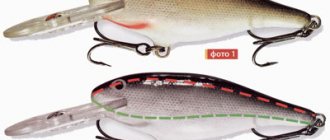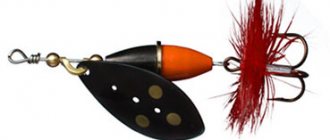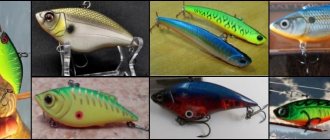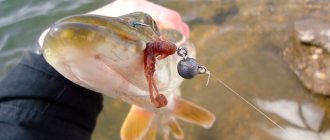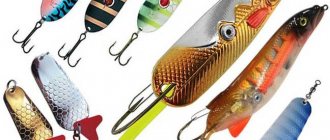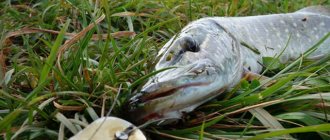Features of fishing for pike with an elastic band
Fishing for pike with a rubber band has gained popularity relatively recently. This is due to bans on this tackle in the past .
Today, this type of fishing is already absolutely legal, with the exception of the period spawning , and many lovers of predatory fish actively use elastic, and with constant success .
In fact, this is an ordinary donka, as for catching “peaceful fish,” but with some nuances. Fishing with an elastic band is suitable for any type of reservoir , both in still water and in the current.
Benefits of rubber bands for pike
This type of fishing has a number of advantages :
- allows you to fish large areas of the reservoir at different depths simultaneously;
- you can use several types of live bait;
- you can cast (launch a boat) the tackle at a considerable distance from the shore;
- allows you to fish hard-to-reach areas of the reservoir with a spinning rod or fly rod;
- ease of use (no need to walk all over the pond looking for a fishing spot);
- simple structure of the gear (even a beginner can assemble it on his own);
- low cost of materials for gear.
Gum device
First you need to take a reel the main fishing line is wound . Then a kind of “garland” with leashes . Leashes are made up to 1 m , and it is desirable that they are made of durable material that the pike cannot bite. The distance between the leashes is 1-3 m, depending on the size of the reservoir, and their number is selected individually ( 5-7 pieces is the best option). The leashes are attached using a carabiner or cambric so that the line does not fray due to constant friction at the connection point.

Attention! Instead of the usual attachment of leashes, you can use a “sliding rig”.
In this case, stoppers are installed on the main line at a certain distance from each other, and the leash itself is attached to a carabiner that slides freely along the line. Stoppers will limit the movement of the leash along the main line (30-40 cm). This type of leash rigging is considered more flexible and effective, as it provides greater freedom of movement for live bait and increases the survivability of the fry. The leashes themselves are equipped with double or triple hooks on which live bait is attached. After the garland with leashes comes an elastic band with a sinker at the end. The weight of the sinker depends on the presence of current and the type of bottom of the reservoir. of casting is also taken into account . If you start the sinker from a boat , the weight can be significantly greater.
Rubber band for pike perch
On the Volga, elastic bands can also be used to catch predators, including pike perch. Only in this case the elastic band is loaded (rubber band diagram for pike perch). At the beginning of the undergrowth with leashes, a sinker weighing up to 20-40 grams , and in a fairly strong current - even heavier. Therefore, the undergrowth with leads goes deeper and is usually located on the pit edge, found in advance and adjusted to the length of the fishing line. This edge is usually marked with a buoy. This kind of fishing is advantageous in that the live bait is always on the catchable edge, along which the pike perch will definitely pass.
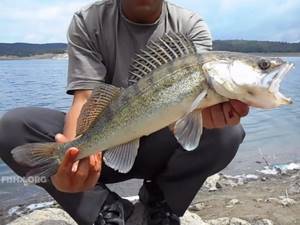
Live bait for catching pike-perch clings under the back in a weak current, but in a current it is better to hook the fish by the lip, otherwise the live bait will spin like an airplane propeller.
The best live bait , which pike perch simply adores, is bleak.
I recommend to read:
Before the bad weather (report)
Share with your friends!
Zywiec
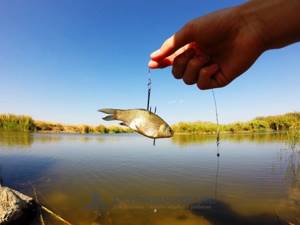
is attached only to the back. It should be pierced across the body just below the dorsal fin, approximately in the center, without damaging the spine, otherwise the baitfish will die. The spindle or loach can be pierced through the upper lip, since this cannot be done behind the back.
Fishing for pike with live bait
Types and sizes of silicone baits for pike
Silicone lures for pike have appeared in our specialized stores relatively recently. Such baits are the most effective for the jigging (moving, dancing) technique of pike fishing and are the most popular in the list of soft baits. On the shelves you can find all sorts of colors, shapes, and sizes of baits. All silicone baits have a hook. Attractants (natural or chemical substances that attract by smell) are added to some silicone baits for pike fishing; it is believed that pike react to such bait faster.
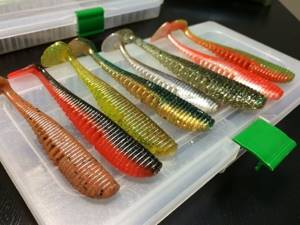
We will consider the types and sizes of silicone baits in more detail below.
Conventionally, artificial baits for pike can be divided into four types:
- vibrotail, in shape resembles a small flat fish with a movable tail, once in the water, the vibrotail begins to actively move, very much resembles a fry, while vibration and noise are created to attract pike;
- twister, one of the types of bait that does not look like a fish. An oblong ribbed body, at the end of which a sickle-shaped tail is attached. The soft silicone body gives a resemblance to larvae with a movable tail, does not scare away the predator, and attracts the attention of the pike with a very soft and smooth movement. There are a great variety of twister colors: red, yellow, green, pearlescent;
- long, imitation worm baits with a thickened head and a small cylindrical thickening in the middle part, a length of 5 centimeters, a weight of 0.4 grams. The nozzle very accurately imitates a worm, has good buoyancy, and at the moment of contact takes a vertical position, thereby creating convenience for swallowing the hook;
- fantasy: frogs, cuttlefish, leeches, worms, bloodworms, maggots. In appearance they are in no way inferior to real creeping ones, fit very well on a hook, and can be used many times.
Color
For successful fishing, it is important to make the right choice (color) of silicone bait for pike.
When choosing the color of the nozzle, there are several factors to consider:
- the depth of the reservoir, the greater the depth, the paler the color of the bait in the water;
- transparency of the water, with clear water it is more appropriate to use a dark silicone nozzle;
- place of fishing;
- the specifics of the reservoir (what is the most abundant fish found), bait that imitates a specific fish.
Experienced fishermen prefer several colors of bait:
- pike reacts most actively to the yellow tint of the main part of the equipment with the presence of red on the back in the early morning;
- in bright sunlight, pike bite on pearlescent iridescent bait;
- on a windy and rainy day, the predator actively approaches the pearl bait with a black back;
- if the predator is inactive, then you should use an iridescent bright color of the bait with a red back;
- at sunset, when the pike lazily goes out to hunt, they lure the predator with baits with yellow tints.
Where to fish with an elastic band?
Large rivers and reservoirs will be ideal fishing spots The elastic can be thrown along the coastal vegetation or, conversely, into the middle of the reservoir, where there is expected to be a significant difference in depth or deep holes.
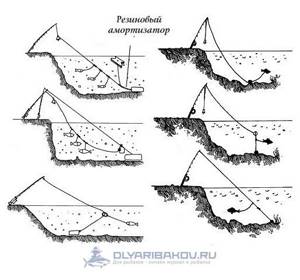
In any case, you should focus on natural shelters for pike. It is an ambush predator that prefers to stand still while waiting for prey. Therefore, various snags, fallen trees, steep banks with holes or reed thickets can be considered a good place to throw gear next to them. Small bodies of water are not suitable for elastic fishing.
How to catch?
After choosing a fishing spot, you need to cast. This can be done by hand from the shore or using a boat. The option with a boat is preferable, as the casting will be as accurate as possible. However, some craftsmen are capable of making good casts from the shore, but this requires not only strength and dexterity, but also considerable experience. No one can make a normal cast the first time. For beginners, it is better to practice before fishing somewhere in an open field.
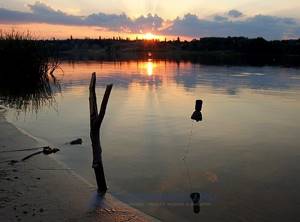
The fishing line does not need to be pulled “into a string”. It is necessary to release it to the side 1-2 m and wrap it around the nearest branch of a tree or bush. This will allow you to see the bite. The fact is that pike do not swallow live bait immediately. She first grabs him and drags him into hiding . And only then begins to swallow.
If the line is too tight, the pike will release the bait, feeling resistance. The tree branch will serve as both a signaling device and absorber . Additionally, you can hang a bell or bell on the fishing line so as not to “miss” the bite.
Important! Live bait is attached only after casting the tackle. To do this, the elastic is taken out of the water again and equipped with a fry, and then the tackle is carefully released back. The sinker should not drag along the bottom, but stand firmly in place. It is allowed to lose the line by 1-2 m, but no more.
Top 10 silicone lures for pike
To catch pike, various silicone baits are used for different bodies of water: in shallow water, deep bottom casts, baits with the ability to pass through thickets. That is why we have created for you a rating of silicone lures for pike. The top 10 silicone lures for pike have proven themselves to be the most successful. We will consider the best silicone baits for pike in more detail below.
Mann's Predator
The Mann's Predator vibrating tail is the most common soft bait for jig fishing for pike. For more than 50 years, these baits have been used to catch predators all over the world. Available in different sizes: the largest is 9 centimeters for large fish, 5.5 and 7 centimeters are universal and the smallest bait is 3 centimeters long. The most popular nozzle is 7 centimeters. A wide color range allows you to choose for different fishing conditions and any fish preferences.
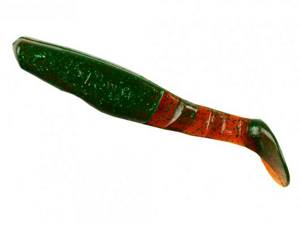
In the ranking of silicone baits, this vibrating tail is in the leading position. The variety of shapes, sizes and colors immediately attracts pike, always an excellent result with even retrieve in calm water;
Keitech Swing Impact
Keitech Swing Impact is an incredibly popular vibrating tail with a ribbed surface; the peculiarity of this bait is that a large amount of salt is used in its production, which makes it inedible.

The secret of the Keitech Swing Impact bait lies in its structure: at the end, on a thin leg, there is a small thickening, with its movement it creates the illusion of a living bait. The nozzle resembles a worm; its ribbing allows it to produce a noise effect under water, which attracts fish. The color range ranges from pale green to rich, bright colors.
Bait Breath Mosya
Bait Breath Mosya is a very unique crustacean, a cuttlefish, the result of the imagination of the developers. Crustaceans with 100% similarity to the prototype.

A distinctive feature of this silicone bait is not only its shape, but also the number of ribs, legs, tail and claws. This design in the water provides mobility and flexibility, causing the effect of an edible bait.
Relax Copyto
Relax Kopyto is a popular bait among domestic spinning anglers, one of the first silicone baits that appeared on our shelves and there was immediately a demand for them. The shape of the vibrotail is an elongated flat dense body with attachments on the tail, which gives additional mobility.
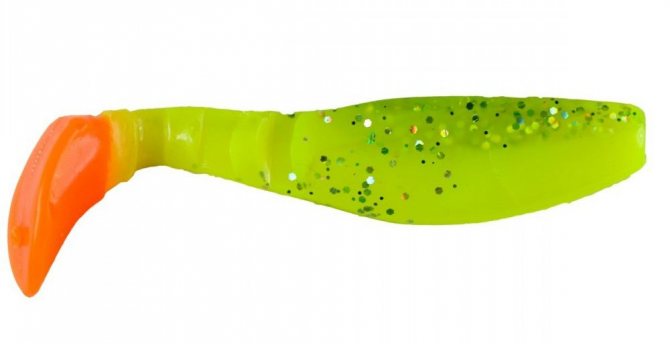
An active, mobile vibrotail with its movements very much attracts even a lazy, well-fed pike. The bait, when retrieved, attracts the predator with its oscillatory movements. Soft rippers Relax Kopyto are available in various sizes from 6 to 16 centimeters.
Lucky John Classic Roach
Lucky John Classik Roach - silicone vibrotail bait differs from other equally popular baits in its structure. The extended tail has excellent aerodynamic properties when casting.

In the water, it begins to move passively, imitating an unhealthy fish; successful fishing with it is carried out slowly in the thickets. The structure of the Lucky John Classik Roach material is very dense; predatory fish cannot always bite through it.
Reins Fat G-Tail Grab
Reins Fat G-Tail Grab is a classic twister made in Japan. An unusual shape of the bait in the form of a sickle with a movable elongated curved tail. There are small tubercles throughout the elastic body; in the water they create additional excitement, which attracts fish.
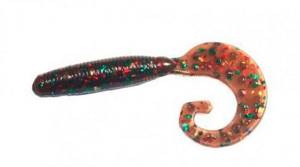
To stimulate the predator's appetite, all bait is impregnated with an attractant, which retains a persistent odor for a long time. The Reins Fat G-Tail Grab bait is available in three sizes: 2,3 and 4. Large baits have proven themselves well when fishing for pike and zander.
Keitech Sexy Impact
Keitech Sexy Impact is a silicone bait, elongated in length with transverse nozzles. The appearance of the nozzle imitates a perfect resemblance to worms.
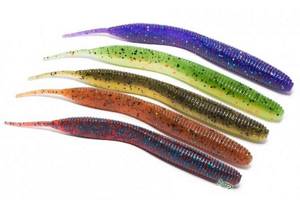
The universal shape allows you to use this bait for various types of jigs. The product contains strong octopus flavors and a large amount of salt. The bait is securely attached with a ring to the hook.
Reins Ax Craw Mini
Reins Ax Craw Mini - soft elastic crustaceans made of loose silicone. Small claws are very mobile. The product is impregnated with pheromones similar to the smell of crayfish. Place the bait with the claws backwards, in the water it seems that the crayfish is moving backwards.
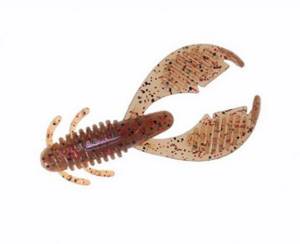
Reins Ax Craw Mini comes in a wide variety of colors, but the most popular shades are green, purple and blue.
{banner_vnutri-kontenta-3}
Kosadaka Vibra
Kosadaka Vibra is a soft, curved bait with a double tail. The twister has a dense ribbed body in the front part, a ring-shaped notch imitates a larva. The tail has a thickening at the end, which adds additional weight to the nozzle.
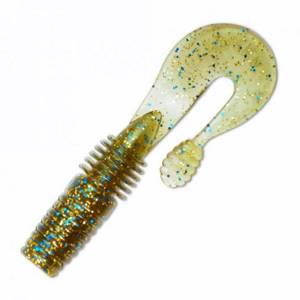
In water, this form of bait is very active due to many small ribs. Kosadaka Vibra is available in three sizes: 5.7.9 centimeters in length with a curved tail. The largest bait for jig fishing is excellent for pike.
Lucky John Mister Greedy
Lucky John Mister Greedy is an edible vibrating tail. A large silicone bait that only predatory fish can handle. The shape of the vibrotail with an unusual corrugated body and bright color is very attractive to pike.
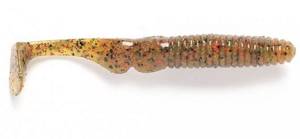
A large, well-fed body, flattened from the top and bottom, deceives the fish; it rushes to the bait, especially since Lucky John Mister Greedy is richly saturated with an attractive smell. Movements simulating a well-fed fish are given by a powerful tail, which sets the bait in motion. There is a hook in the body of the vibrotail.
When to hook and how to fish?

There are also those who wait up to 10 minutes and only then strike for sure. However, in this case, the equipment should be as flexible and sensitive as possible, so as not to spook the pike during a bite and to see how the predator behaves. Everyone must decide when to strike. The effectiveness of hooking is directly related to experience. Pike in different bodies of water and at different times of the year can bite differently , so there is no unique hooking time. The main thing is not to hook immediately after the bite - this is almost certainly a failure.
After a successful hooking, it is necessary to estimate the size of the pike. If it is a small fish up to 1 kg , then you can easily pull it out with simple pulling and reeling. However, a large individual will have to be starved to death. With each jerk it is necessary to give slack and let the line down a little. There is no need to force events, otherwise a large fish will easily break the stretched line with another jerk. At the same time, it is useful to have a landing net on hand , which will greatly facilitate the landing, especially if the shore is not too convenient for this.
How to fish for pike
Catching pike with a rubber band is quite simple and yet effective. to make and adjust correctly so that extraneous factors do not interfere with fishing. When fishing, you need to analyze literally everything : time of year, fish activity, bottom topography, depth, etc. Moreover, you need to find a connection between all this and your gear.
Even on the same body of water at different times of the year, the place and technique of pike fishing, and therefore the choice of equipment, differ. Therefore, each regular fishing trip must be planned in advance and implemented in the form of an equipped elastic band for pike. You need to constantly experiment with the length of the leaders, the weight of the sinker, the fishing location, the type of live bait and other things in order to ultimately achieve the maximum result.
Making rubber band tackle
This device does not use rods. The base consists of two pins on the shore, which are stuck into the ground. All equipment is stored separately from them on the reel. The equipment includes:
- Main or transport line no more than 100 meters;
- fishing line ( 0.20 – 0.40 mm ) with leads and hooks;
- The shock absorber itself is attached to the fishing line through a swivel and carabiner. It is usually made of round aircraft model rubber, its length is chosen practically, usually 5 meters of fishing line are measured for each meter of rubber;
- Leashes with a diameter of no more than 0.15 mm and a length of up to 10 cm ;
- A silk cord used to attach a weight to an elastic band.
The rubber shock absorber makes it possible to get the fishing line with all its attributes, leaving the load in place, which makes the process of changing bait and returning hooks to their place much faster. This place can be baited. The importance of the latter should be noted. The bite will be much better with targeted feeding than with scattering over a large area.
Selection of sinkers
When installing such bottom gear, you need to select a sinker. It should be of such weight that, when the rubber is fully tensioned, it stays in one place and at the same time the entire line can be pulled ashore without tearing the rubber shock absorber. On average, the weight of the sinker is 200-450 g . 60-70 cm long is attached to the sinker . It’s good if you have a boat for delivering cargo over long distances.
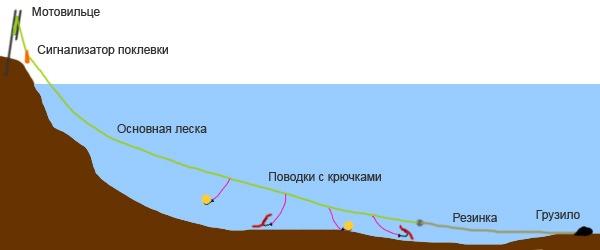
How to tie an elastic band to a fishing line
The fishing line and elastic band are attached using a rubber ring and a carabiner.
The elastic band is passed into the ring from the reverse side and wrapped with any adhesive tape, which is also wrapped with cotton thread, the latter getting wet and quickly compresses the fastener. This end is reconnected to another ring, into which a load is suspended with wire. All leashes with hooks are secured to the fishing line “loop to loop”. They also use a swivel and a clasp. This way you can quickly release the fish with a leash and attach a second one.
For ease of installation on the river, you should have different leashes with hooks on different inserts. This allows you to quickly change them depending on the fishing locations.
Making tackle, video:
